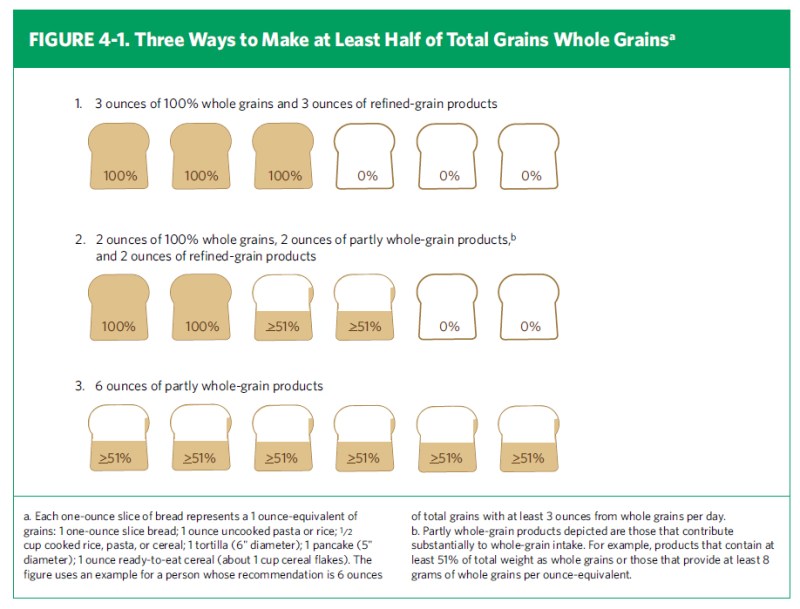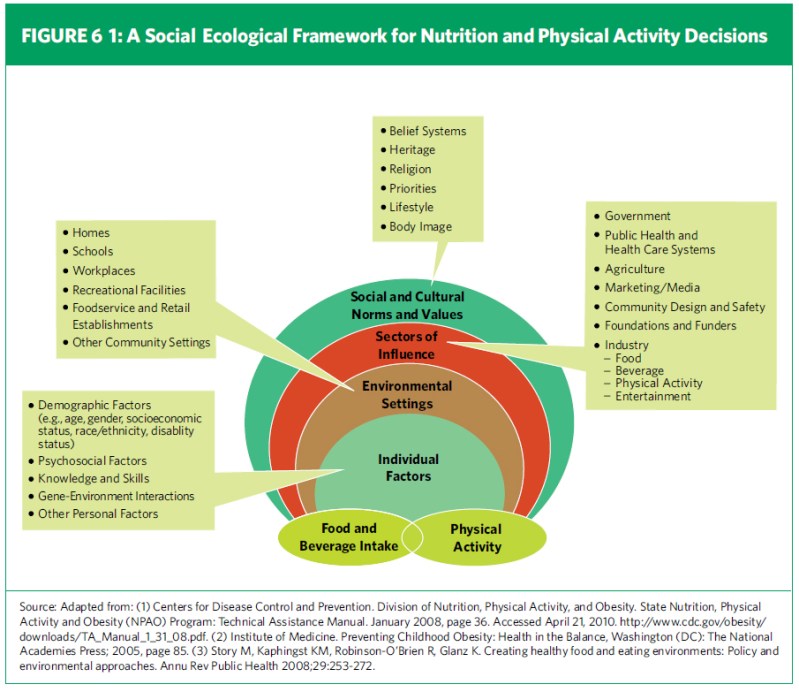 Food media outlets were abuzz a few weeks ago with the release of the once-every-5-years update of Dietary Guidelines for Americans 2010 (released on January 31, 2011 just so we could all make the requisite slow-as-the-federal-goernment jokes), prepared by the USDA and the US Department of Health & Human Services. I read some of the news bits, and caught some reactions on Twitter, but I deliberately held off on reading the full policy document because I basically knew what my reaction would be: pissed off.
Food media outlets were abuzz a few weeks ago with the release of the once-every-5-years update of Dietary Guidelines for Americans 2010 (released on January 31, 2011 just so we could all make the requisite slow-as-the-federal-goernment jokes), prepared by the USDA and the US Department of Health & Human Services. I read some of the news bits, and caught some reactions on Twitter, but I deliberately held off on reading the full policy document because I basically knew what my reaction would be: pissed off.
Some of you may know that I am a scientist, and while I am not a dietician nor a nutritionist, I am, by training, a biologist. My particular expertise in the pharmaceutical sciences is pharmacokinetics & metabolism, a discipline that requires a thorough working knowledge of how drugs are absorbed, broken down by the liver or other tissues, and excreted. Because of my training and experience, I might lay claim to a greater-than-average understanding of how food impacts our bodies: how it’s absorbed, how and where it is distributed, the effect of different macro- and micro-nutrients, how it is turned into energy to fuel the body. But, then again, I might not: the real benefit in my years of experience is that I think like a scientist. I understand the jargon: after all, I’ve submitted hundreds of documents to the FDA. I can read between the lines of vague statements and know exactly what the data must have shown, or not shown. I can evaluate data on its own merits and see where conclusions and recommendations have been watered down for reasons political, administrative or semantic. I know that these documents are crafted by committee, over many, many painful hours around a conference table, discussing the various merits of “eating pattern” vs.”total diet” and “fortified soy beverage” vs. “soymilk.” And I know that many truly dedicated and talented scientists, doctors and nurses have spent countless hours poring over data, reading manuscripts, and researching the latest studies, in order to distill the most current information about food and how it affects our health into one straight-forward, easy to understand and useful document. Which is what pisses me off.
 The thing is, there is some good information in those 95 pages: things like fat doesn’t make you fat (nor do carbohydrates), total calorie intake and expenditure is what matters for long-term weight management; that nearly every American eats too much salt, and that changes in the way Americans eat (more fresh food, more home-cooked food, less processed/ prepared food) and changes in the way food manufacturers process food (lower sodium content) will be required to meet the current recommendations for daily salt intake; that whole grains are not only better for you nutritionally, the extra fiber can help you manage body weight by making you feel more full. But much of this good information is buried in vague statements and techno-babble that is difficult to intrepret, like “Acceptable Macronutient Distribution Ranges (AMDR),” (i.e. the proportion of protein, carbohydrates and fats in the diet) and “For adolescents and adults of all ages (14 years and older), the IOM set the Tolerable Upper Intake Level (UL) [of sodium] at 2,300 mg per day.” (i.e. eat no more than 1 teaspoon of salt a day) and, a personal favorite, “Americans should aim to replace many refined-grain foods with whole-grain foods that are in their nutrient-dense forms to keep total calorie intake within limits.” (i.e. switch to whole wheat bread).
The thing is, there is some good information in those 95 pages: things like fat doesn’t make you fat (nor do carbohydrates), total calorie intake and expenditure is what matters for long-term weight management; that nearly every American eats too much salt, and that changes in the way Americans eat (more fresh food, more home-cooked food, less processed/ prepared food) and changes in the way food manufacturers process food (lower sodium content) will be required to meet the current recommendations for daily salt intake; that whole grains are not only better for you nutritionally, the extra fiber can help you manage body weight by making you feel more full. But much of this good information is buried in vague statements and techno-babble that is difficult to intrepret, like “Acceptable Macronutient Distribution Ranges (AMDR),” (i.e. the proportion of protein, carbohydrates and fats in the diet) and “For adolescents and adults of all ages (14 years and older), the IOM set the Tolerable Upper Intake Level (UL) [of sodium] at 2,300 mg per day.” (i.e. eat no more than 1 teaspoon of salt a day) and, a personal favorite, “Americans should aim to replace many refined-grain foods with whole-grain foods that are in their nutrient-dense forms to keep total calorie intake within limits.” (i.e. switch to whole wheat bread).
 Last week the UK issued dietary guidelines to its citizens advising that people who consume “a lot” (more than 90 grams a day) of red or processed meat should consider cutting down (to 70 grams or less per day) to lower the risk of bowel cancer. Included in the announcement were these straight-forward examples:
Last week the UK issued dietary guidelines to its citizens advising that people who consume “a lot” (more than 90 grams a day) of red or processed meat should consider cutting down (to 70 grams or less per day) to lower the risk of bowel cancer. Included in the announcement were these straight-forward examples:
Examples of a 70g portion of meat are:
- one medium portion shepherds pie and a rasher of bacon;
- two standard beef burgers;
- six slices of salami;
- one lamb chop;
- two slices of roast lamb, beef or pork; or
- three slices of ham.
In contrast, we have the same advice from the Dietary Guidelines for Americans:
In addition to being a major contributor of solid fats, moderate evidence suggests an association between the increased intake of processed meats (e.g., franks, sausage, and bacon) and increased risk of colorectal cancer and cardiovascular disease. To reduce the intake of solid fats, most Americans should limit their intake of those sources that are high in solid fats and/ or replace them with alternatives that are low in solid fats (e.g., fat-free milk).
So, in the UK, all you have to do to limit your risk of bowel cancer is to knock off that extra rasher of bacon at breakfast. Across the pond, you need to replace that bacon with skim milk. Which advice do you think is likely to be adopted?
 The point is, there are some good data, and good recommendations, buried within all the politcally-mandated “soft language” and scientifically-mandated technical jargon. There are also bad recommendations, internal contradicitions, and a lack of focus on more recent food science. I do not agree with the promotion of low-fat and fat-free foods, ‘fortified soy,’ and artificial sweeteners, nor the recommendation to use “little or no salt” when cooking or eating foods at home. I think it is unconscionable to recommend that most Americans should more than double their intake of seafood (from 3 1/2 oz to 8 oz per week) when demand already outstrips supply. It is disheartening that the overriding tone of the document focuses on personal responsibility: Americans must do this and not that, eat this, but limit that, while there is only a passing nod to the fact that many Americans live in food deserts, where access to fresh food is practically nil, and/or in crime-ridden or sprawl-blighted neighborhoods where opportunities for exercise are slim. In particular, I am irked by the things that they skirt around but don’t say: cook more, eat out less; consider that you might not have to have meat at every meal; enjoy your food, just eat less of it.
The point is, there are some good data, and good recommendations, buried within all the politcally-mandated “soft language” and scientifically-mandated technical jargon. There are also bad recommendations, internal contradicitions, and a lack of focus on more recent food science. I do not agree with the promotion of low-fat and fat-free foods, ‘fortified soy,’ and artificial sweeteners, nor the recommendation to use “little or no salt” when cooking or eating foods at home. I think it is unconscionable to recommend that most Americans should more than double their intake of seafood (from 3 1/2 oz to 8 oz per week) when demand already outstrips supply. It is disheartening that the overriding tone of the document focuses on personal responsibility: Americans must do this and not that, eat this, but limit that, while there is only a passing nod to the fact that many Americans live in food deserts, where access to fresh food is practically nil, and/or in crime-ridden or sprawl-blighted neighborhoods where opportunities for exercise are slim. In particular, I am irked by the things that they skirt around but don’t say: cook more, eat out less; consider that you might not have to have meat at every meal; enjoy your food, just eat less of it.
Over the next few weeks, I will be delving into some of the broader topics of the Dietary Guidelines in more detail: fat, sodium, whole foods & processed foods, weight loss. I will review recent research, point out where I think the document gets it right, and where I think they were too soft, or flat out wrong. I will attempt to translate techno-babble, distill vague, meandering statements into pithy recommendations, and develop my own set of dietary guidelines, Local Kitchen-style (I suspect, however, that Michael Pollan has beaten me to the punch). Hang on, folks – it’s going to be a bumpy ride.
With the exception of the bacon, all images above taken directly from the Dietary Guidlines for Americans, 2010.

Bravo! I too am a scientist and I appreciate the fact that you took the time to look over this document. I have not, nor am I interested in doing so. The USDA is not qualified to suggest nutrition guidelines, in fact most medical doctors are not qualified either. Sadly this document appears to be a do this and not that with complex language that is more than confusing to the average citizen.
The lack of addressing the real issues, such as food deserts, poverty and livable neighborhoods is almost criminal. We as a society have put our health into the hands of big industrial foods and have never questioned their intention of profiting at the expense of our health. Our government is directed by big food and seems to sacrifice the health of the citizens.
Thanks for being interested and taking the time to research and write about the 2010 dietary guidelines. I so appreciate your point of view that the guidelines should be as direct and helpful for the American population as possible (or is that not the intended audience?) and that responsibility should be shared by all sectors, not just dropped on the individual. I look forward to more of your insightful comments.
Good on ya for taking on this arduous task, I’ll be interested in seeing your posts to come!
Thanks so much for doing this and caring enough to translate for us not so scientifically inclined! It’s amazing how ridiculous this country is sometimes.
Could I give up the pork chop instead of the bacon? Cause man, I love my bacon! In all seriousness, I really appreciate your insight and willingness to translate scientific jargon into language we can all understand.
Thank you, thank you for cutting through the techno-babble. I will be eagerly awaiting your future posts.
And I think you meant to type “deserts” instead of “desserts” in your post. I’d rather live in a food dessert, of course. 🙂
Ha! Talk about a Freudian slip. Food desserts for everyone! 🙂
Fantastic! I can’t wait to read the rest of it all!
I think you may have forgotten to mention the fact that guides the writing of these documents: corporate food America will not stand for too much bashing of their industry products. Remember what happened to George McGovern when his committee recommended reducing consumption of meat.
I look forward to reading your summary and views on the subject. If I had to sum these guidelines up in one sentence it would be: Eat real food, people. Go to the source-eat food that hasn’t been too processed. And try to grow your own.
Hi Maureen,
Yes, of course, politically-motivated ‘softening’ of recommendations is clear throughout the document, and I’ll likely delve into that more deeply in some of the individual posts. But before we beat too hard on political officials folding to corporate interests, let’s consider the mandate of the USDA. From their website, this is the USDA’s “stratgeic plan framework:”
“USDA has created a strategic plan to implement its vision. The framework of this plan depends on these key activities: expanding markets for agricultural products and support international economic development, further developing alternative markets for agricultural products and activities, providing financing needed to help expand job opportunities and improve housing, utilities and infrastructure in rural America, enhancing food safety by taking steps to reduce the prevalence of foodborne hazards from farm to table, improving nutrition and health by providing food assistance and nutrition education and promotion, and managing and protecting America’s public and private lands working cooperatively with other levels of government and the private sector.”
Which, roughly translates into:
1. Grow the market
2. Grow the market
3. Provide jobs for farmers
4. Food safety
5. Food assistance & nutrition education
6. Farmland management
I’m sure there is no coincidence in the order/priority of the missions. So their job performance, that which is held accountable by their bosses, is both to grow agriculture in the US AND to provide nutrition information to Americans. These two missions are clearly in conflict of interest: what if the CDC was in charge of growing the market for pharmaceuticals? And what if that was their No. 1 priority? So, even though their scientists now that abuse of antibiotics creates anti-biotic resistant drugs and a whole host of health-related issues, they can’t come out and say “Don’t go running to the doctor for anti-biotics every time you get a cold” because that would cut into sales, which is against their primary mission. So the data are couched in lame, vague statements like “Americans should rely on anti-biotics only in those medical situations in which it has been determined by a licensed medical practitioner that such treatment will be beneficial in treating blah blah blah… (are you still reading? Nope, neither am I.)
Point is: USDA can’t possibly fulfill both of their missions. Providing health & nutrition information should be strictly the job of the Dept of Health & Human Services, who should review data and make recommendations based purely upon what is best for the health of Americans. The USDA’s mandate should be to ensure that the H&H’s recommendations can be met within the US agricultural system.
I’m not sure how the system has evolved to the point that it is now (but I will try to look into that further). But, despite my pissed-offedness with the Dietary Guidelines, I am equal parts pissed off at government officials caving to corporate interests as I am pissed off ON BEHALF of government officials who are being asked to do the impossible: successfully complete two missions that are in direct opposition to each other.
Pingback: {weekend reading} NATIONAL EDITION « FROM SCRATCH club